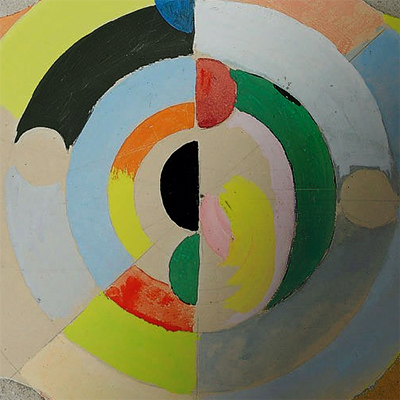Cheer Up: The Antithesis of Pandemic Blues

Without community, we lose the environment in which cheerfulness grows and thrives. According to Timothy Hampton, professor of French and comparative literature and the outgoing director of the Townsend Center, the link to community distinguishes cheerfulness from other emotions like joy, anger, and sadness. Through the processes of self-construal and self-manipulation, we have some control and agency over how we experience cheerfulness and how we outwardly express it, as opposed to an involuntary emotional state.
In a Berkeley Book Chat with the Townsend Center for the Humanities on his newest book, “Cheerfulness: A Literary and Cultural History,” Hampton suggested that it has become more difficult for us to sustain cheerfulness since the Covid-19 pandemic began because we have been deprived of the optimal setting to practice expressing it. In his words, “cheerfulness is ripped away from the communitarian contexts in which it claims authority,” and we are left with unprocessed emotional responses that arise as a result of our experiences. Isolation from communities has resulted in the loss of the means and incentive to convert these emotions into cheerful outward expressions.
Community provides opportunities to experience cheerfulness and act upon collective moral obligations. The social isolation that became standard in the early months of the pandemic caused a rift in behavioral interaction and left social media as the primary means of maintaining community. This prioritization of online interaction increased exponentially to the point where artists coopted “posting” as a central contemporary artform. In his talk, Hampton questioned the impact of this shift in media on the place of cheerfulness in art. Social media, he avers, does not afford opportunities for genuine cheerfulness; as a result, satirized and pessimist expressions as well as commercialized and inauthentic “cheer” have proliferated. But Hampton suggests that this shift is significant on a larger timescale, perhaps marking a turning point in the history of Western aesthetics — the death knell of a "cheerful aesthetic" that has influenced the Western artistic canon.
Hampton understands cheerfulness as connected to a sense of community and its representation. An expression of the energy of emotional life and style, cheerfulness becomes an issue of style and aesthetic, and in Nietzsche’s view, it lies on the surface of art. Cheerfulness has been reduced and diminished by isolation, the effects of which are evident in the current generation of young adults, who have spent some of their formative years estranged from critical interaction. The value of art has also shifted in pandemic times, with an emphasis on passive forms of media consumption such as music, television, and film, as well as social media platforms that rely primarily on visual representation like photo and video.
The current uptake of these artforms on social media portends the death of cheer: adolescents in particular have embraced nihilistic and even Dadaist tendencies on social media. In the absence of cheer, deprecatory and despairing humor has prevailed. While Hampton argues that Western art has historically been provoked by melancholy, he also points to a historically cheerful aesthetic that has influenced the Western artistic canon, transforming negative feelings into positive social bonds and moral judgments.
A platitude like “cheer up” is not enough to restore these bonds. For Hampton, it is necessary to the “Yankee tradition of upbeat commercialized cheerfulness” to instead invent a new tradition of the cheerful altogether, one that invites us to cope with the condition of the world by embracing enlightened conversation. Certain aesthetics of phony cheer are ubiquitous in the realm of the internet, and they only serve to reinforce classist and capitalist rhetoric by presenting cheer as an individual performance rather than an expression within a communal context that is rigidly dictated by sociopolitical norms. For example, the “clean girl” aesthetic, which has gained popularity on platforms such as Instagram and TikTok, proliferates the idea that if one does not abide by specific expectations and present themselves in a certain way, they are a detriment to their own wellbeing. The implication is that one need only drink a green smoothie and wear neutral colors to find inner peace and happiness. In reality, these manufactured aesthetics of cheer are costly to maintain and simply fall in with the other trends that feed overconsumption and mass production. Synthetic cheerfulness becomes a distraction from the more genuine issues that impact our lived experiences, and artificial forms of cheer prevent us from making correct moral choices by encouraging us to indulge in vices that bring us only short-lived bursts of cheer.
Hampton’s book inspires a few hypotheses. For one, the social media phenomenon of “romanticizing” one’s own life can inadvertently lead to the glorification of substance abuse by associating party culture with personal fulfillment and pleasure. It is necessary to refocus our attention on art as a means of finding and spreading cheer instead of allowing social media to enable behavior that is ultimately more harmful than cheerful. Our everyday experience as participants in society is impacted and influenced by the life of the mind, so we must recognize cheerfulness as a technology of the self, a tool we can use to connect the power of art to the present we are living in.